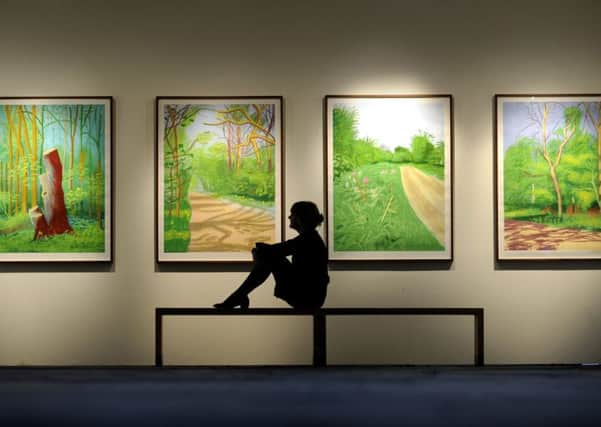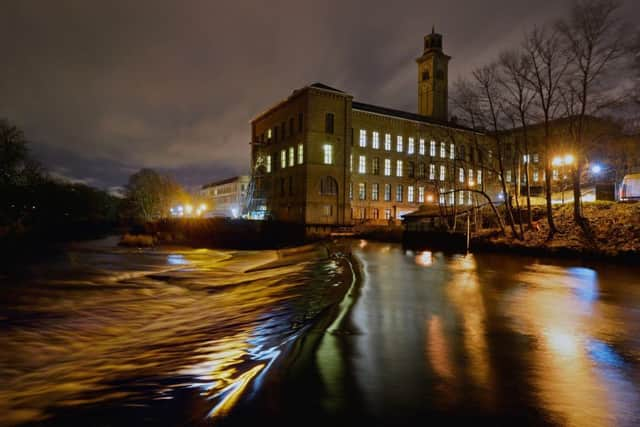Sir Titus's time warp: 15 years of world acclaim for Saltaire


Created in the mid 19th century by Sir Titus Salt, Saltaire is not just a stunningly well-preserved example of Victorian planning but most pertinently, as a community, it continued to thrive long after the industry on which it was built had gone.
“Exceptionally, and contrary to most of his peers, Salt built not just a mill, but provided a social environment for his workers that was of a far higher and more thoughtful standard than anything else that existed at the time,” says Saltaire History Group founder member Dave Shaw.
Advertisement
Hide AdAdvertisement
Hide AdThe social environment to which Dave refers, which is still flourishing today, is the workers’ accommodation – laid out as a grid of streets, all originally built with water, drainage, gas and a back yard with a private lavatory – a far remove from the squalor and primitive conditions that mill workers were enduring in Bradford at the time. Most significantly Salt provided a school, park, hospital, congregational church, almshouses, dining hall, and finally, what is now called Victoria Hall – a magnificent building full of recreational and education facilities, including a gymnasium, snooker room, library and a stage for drama productions and scientific lectures.


Crucially this environment meant that from the outset Saltaire became a thriving and vibrant community, something which captured the attention of Unesco.
“Saltaire is still a real place where real people live, just as Sir Titus Salt intended it to be,” says Zoe Silver, one of the directors of Salts Mill. “The mill also fulfils many of its original functions too, still employing people who make things. When it opened in 1853 its one function was the manufacture of a high-quality worsted cloth, whereas now it houses a diverse range of businesses from the cutting edge of technology to publishing, architecture, engineering, fashion and interiors. It’s wonderful that more than 1,000 people are still employed here.”
Salts Mill is a magnificent example of the Italianate style, an architectural design resonant throughout all the public buildings that Salt created, notably the extraordinary church and opulent Victoria Hall. Once a palace of industry providing work for 4000 people, the mill is now a palace of enterprise. This was the vision of Zoe’s father, the late Jonathan Silver, who bought the derelict building in 1987 with the aim of creating an environment where art and commerce could complement each other.
Advertisement
Hide AdAdvertisement
Hide Ad“The combination of being in a great location, surrounded by world-class art, with access to delicious food and a stimulating programme of cultural events, all within this beautiful and important historic building, is what attracts our business tenants. When Dad opened the 1853 Gallery in 1987 he said: ‘It’s very early days, but it looks as if the project will involve leisure, entertainment, the arts and generally having a good time – a day out at Salts!’ And that’s basically what happens here – every day – for those who work here and the visitors who come.”


The world class art to which Zoe refers is that of David Hockney, who became a close personal friend of her father. Salts Mill houses the world’s largest private collection of Hockney’s work, which has grown from 56 paintings in 1987 to over 400 pieces today, including examples of his early work through to his ground-breaking The Arrival of Spring, a 49-part work documenting the changing seasons in Woldgate, near Bridlington. As Zoe terms it, “it’s a gift to everyone”, which the free admission to the mill and car parking endorse.
The custodians of Saltaire’s unique heritage are many. It was the volunteer-led Saltaire Village Society that supported its designation as a Unesco World Heritage Site. Saltaire Inspired is another group of local residents who organise the annual community-based Arts Trail, which brings the visual arts to all through installations in public buildings, open spaces and even within residents’ homes. Saltaire Festival, musical events, vintage and craft fairs and the myriad of independent shops and eating places also strengthen the community.
Officially, the delegated responsibility of managing the heritage of Saltaire lies with Bradford Metropolitan District Council, which has, according to Dave Shaw, “improved the town considerably”.
Advertisement
Hide AdAdvertisement
Hide Ad“They’ve refurbished the main artery, Victoria Road, reintroducing some cobbling, repairing the railings and walls, and have replaced the ornate Victorian-style lighting outside Victoria Hall – so now the whole aspect and approach looks much closer to the way it did 150 years ago.
“The most significant piece of restoration though has been that of Roberts Park, a 14-acre green space created by Salt for his workers’ use. The park was gifted to the people of Saltaire and Bradford by Sir James Roberts, who owned and ran the mill in the early 2oth century. Bradford Council, supported by £3.3m of Lottery money, have made a wonderful job of the restoration, landscaping it and refurbishing the park buildings and bringing them back into use.”
Saltaire History Club fulfils a unique function for the community, as it continues to uncover and discover new elements of the village’s rich past. “The club is constantly making discoveries,” says Dave. “Only two weeks ago we were able to confirm that prior to the building of Victoria Hall, the Dining Hall – which is one of the buildings now owned and used by Shipley College – was the original community centre for the town. They even held an anti-slavery meeting there with a fugitive slave from the USA present.”
Another recent discovery was the importance of the Milner Field estate, in particular Milner Field Farm which lies to the north-west of Saltaire. It is a rare example of a 19th century model farm, built by Salt and which Salt’s son and then Roberts’ ran as an example of the best farming practices of the day. “The farm buildings are under threat of development which is something many people in and around Saltaire are resisting,” adds Dave.
Advertisement
Hide AdAdvertisement
Hide AdPlanning wrangles aside, the maxim which Saltaire was created upon and which it continues to embody today is the value and importance of community. Salt created a paternalistic haven for his workers, which future mill and ship owners such as Roberts, preserved. With Silver, operating in different times, paternalism became philanthropy, his aspiration being to make exceptional art in an exceptional environment available to everyone – something he more than achieved, and which his family continue to honour through their ongoing development of the mill.
Salts Mill and Saltaire village still complement each other, with the former housing two permanent exhibitions about the village’s unique heritage, and the latter looking forward to opening up some hitherto unseen historical spaces later in the year, as part of the Heritage Open Days initiative. The vibrant art and music scene intertwines both, while the added excitement of Hockney’s forthcoming 80th birthday is sure to add something special to this year’s plans.
“Salt’s strength of vision was astonishing,” says Zoe with a smile. “He was such a fascinating character and he was right at the heart of everything he created. What he achieved, especially at an age when most of his peers were retiring and putting their feet up, is astonishing, yet the most exciting thing is that the Saltaire he created exists today, it is still a living and breathing place.”
• Saltairevillage.info; saltsmill.org.uk; saltaireinspired.org.uk; for more information about Milner Field Farm email [email protected]